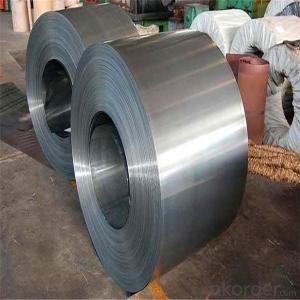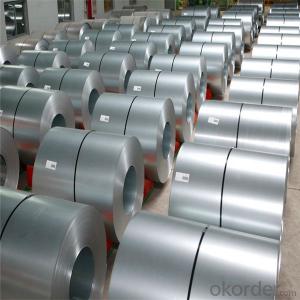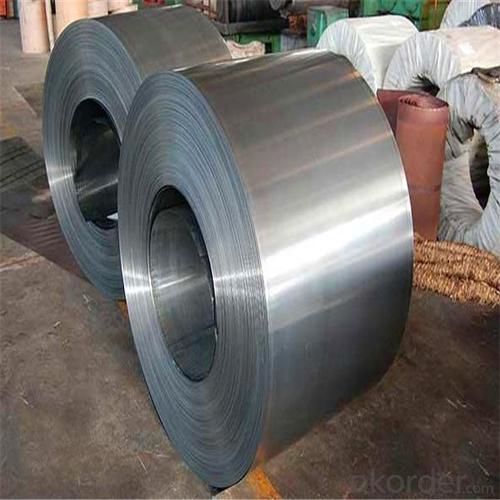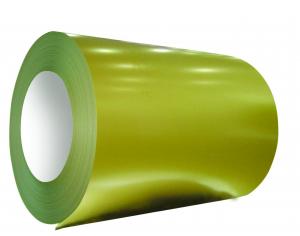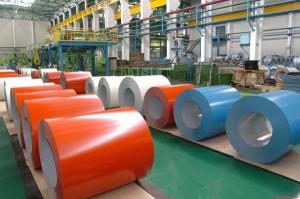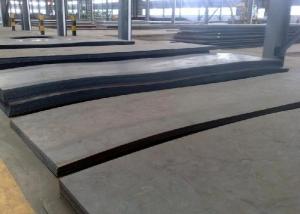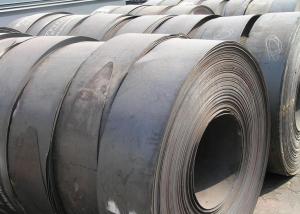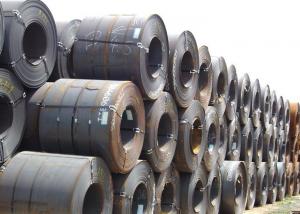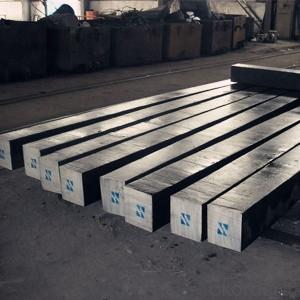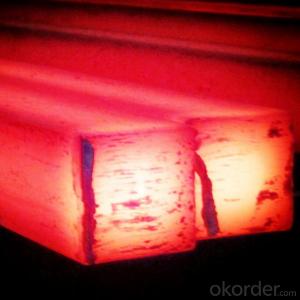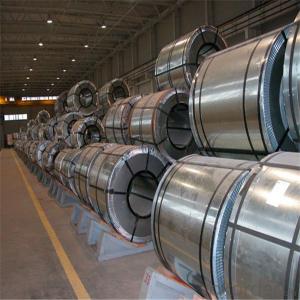Prime Quality SPCD Cold Rolled Steel Sheet/Coil
- Loading Port:
- China main port
- Payment Terms:
- TT OR LC
- Min Order Qty:
- 20 m.t.
- Supply Capability:
- 50000 m.t./month
OKorder Service Pledge
OKorder Financial Service
You Might Also Like
Specification
Prime Quality SPCC Cold Rolled Steel Sheet/coil
Usage: Widely used to appliance,automobile industry or other decoration usage.
Certificate: ISO9001
Packing Details: Wrapped by water proof paper and plastic film.Covered with iron sheet,strapped by steel strips to protect the damage under transportation.
Details please check following format
Brief Introduction
Cold rolled steel coil is steel that has been worked below its recrystallization temperature by passing it between a pair of rollers. Recrystallization temperature is the temperature at which grains in the lattice structure of the metal have been rearranged, leaving it free of strain and deformations. Cold rolled steel coil is pre-treated before being cold rolled with a process known as pickling, which uses strong acids to remove scale and other impurities. The cold rolled steel coil is then passed through rollers to reduce its thickness. Most cold rolling takes place in multiple passes and as the size of the cold rolled steel coil is further reduced, its strength and hardness both increase, but its ductility decreases. After cold rolling, heating the metal up in a process known as annealing can restore some of its ductility. The final cold rolled steel coil may be manufactured in the form of sheets, strips, bars, or other forms.
Products Picture:
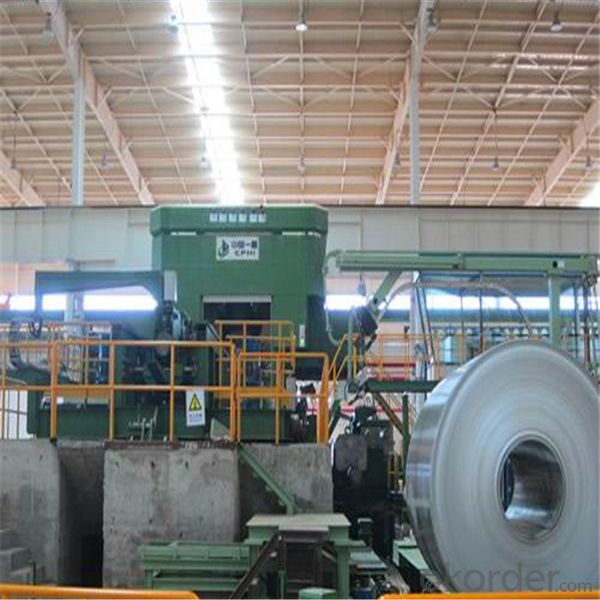
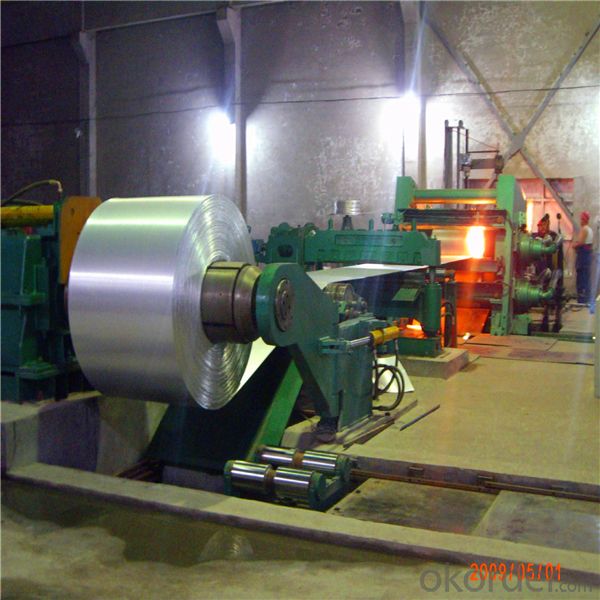
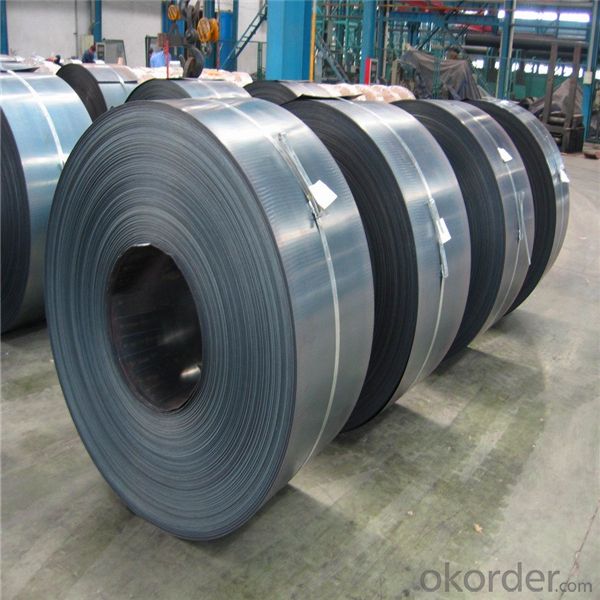
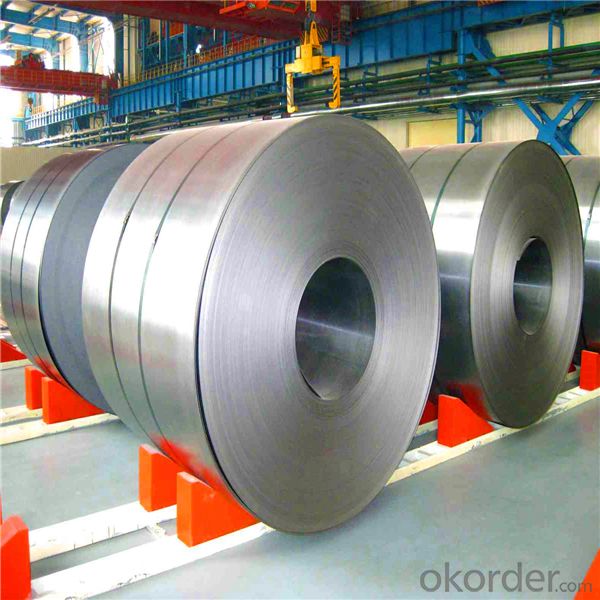
1)Size: Thickness 0.4mm to 3.0mm, width 914mm to 1500mm.
2)Length: Any size or in coil
3)Material grade: SPCC, SPCC-SD
4)Standard: GB / JIS / DIN
5)Package: Waterproof paper with steel pallet.
6)Delivery time: Within 15days.
7)Passed ISO9001 CERTIFICATE
- Q: How is steel used in the production of tools and hardware?
- Steel is commonly used in the production of tools and hardware due to its strength, durability, and versatility. It can be forged, shaped, and tempered to create various types of tools such as wrenches, hammers, screwdrivers, and saw blades. Steel's hardness allows it to withstand heavy use and resist wear and tear, making it ideal for tools that require high strength and toughness. Additionally, steel can be easily machined and sharpened, enabling the production of precise cutting edges and intricate designs, further enhancing its utility in the manufacturing of tools and hardware.
- Q: How do steel products contribute to the renewable energy sector?
- Steel products contribute to the renewable energy sector in various ways. Firstly, steel is a key component in the manufacturing of wind turbines, which are crucial for wind energy generation. The towers, nacelles, and blades of wind turbines are predominantly made of steel, providing structural integrity and durability. Secondly, steel is used in the construction of solar panel frames and support structures, ensuring their stability and longevity. Additionally, steel is essential for the development of infrastructure, such as transmission lines and energy storage systems, which are vital for the efficient distribution and management of renewable energy. Overall, steel products play a significant role in facilitating the growth and sustainability of the renewable energy sector.
- Q: What are the different types of steel cables and ropes?
- There are various types of steel cables and ropes available, including wire ropes, galvanized steel cables, stainless steel cables, and aircraft cables. Each type has its own specific uses and characteristics. Wire ropes are made up of multiple strands of wire twisted together and are commonly used for lifting heavy loads. Galvanized steel cables are coated with zinc to enhance corrosion resistance and are often used in outdoor and marine applications. Stainless steel cables are highly resistant to rust and corrosion, making them suitable for harsh environments. Aircraft cables are specifically designed for aviation and aerospace applications, known for their strength and flexibility.
- Q: What are the properties of heat-resistant steel for high-temperature applications?
- Heat-resistant steel for high-temperature applications has several key properties. Firstly, it has a high melting point, allowing it to withstand extreme temperatures without deforming or melting. Additionally, it exhibits excellent strength and toughness at elevated temperatures, ensuring structural integrity under thermal stress. Moreover, heat-resistant steel possesses good oxidation and corrosion resistance, preventing degradation due to exposure to air or corrosive environments. Furthermore, it has low thermal expansion, reducing the risk of thermal distortion and ensuring dimensional stability. Lastly, it demonstrates good thermal conductivity, facilitating efficient heat transfer and distribution.
- Q: What are the properties of corrosion-resistant steel for marine applications?
- Corrosion-resistant steel for marine applications possesses properties such as high levels of chromium and nickel, which provide excellent resistance to corrosion caused by saltwater exposure. It also has a protective oxide layer that forms on the surface, preventing further oxidation. Additionally, it exhibits high strength and durability, making it ideal for withstanding harsh marine environments.
- Q: What are the different types of steel angles and their applications in construction?
- There are several different types of steel angles used in construction, including equal angles, unequal angles, and L-shaped angles. Equal angles have equal sides and are commonly used as structural components to provide support and stability. Unequal angles have different length sides and are often used to create transitions or to accommodate specific design requirements. L-shaped angles, also known as corner or bracket angles, are used to reinforce corners and joints in construction projects. Overall, steel angles are versatile and essential components in construction, providing strength and stability to various structures and applications.
- Q: What are the safety considerations when working with steel products?
- When working with steel products, some important safety considerations include wearing appropriate personal protective equipment (PPE) such as gloves, safety glasses, and steel-toed boots to protect against cuts, burns, and impact injuries. It is also crucial to maintain a clean and organized workspace to prevent slips, trips, and falls. Additionally, workers should be trained on proper handling techniques to avoid strains or musculoskeletal injuries. Adequate ventilation and respiratory protection should be provided when necessary to protect against fumes and dust. Regular maintenance of tools and equipment is essential to prevent accidents and ensure optimal performance. Finally, following established safety protocols and guidelines, as well as being aware of potential hazards and risks associated with working with steel products, is vital for a safe working environment.
- Q: What are the uses of steel wire mesh in filtration?
- Steel wire mesh is used in filtration for various purposes. It is commonly used as a filter medium to separate solids from liquids or gases. The mesh structure allows for effective removal of impurities, ensuring a cleaner and purer end product. Steel wire mesh is also used in industrial applications where high temperatures or corrosive environments are present, as it is highly durable and resistant to wear and tear. Additionally, it is used for sieving and grading purposes, ensuring the desired particle size distribution in filtration processes.
- Q: How are steel products used in the construction of high-rise buildings?
- Steel products are used extensively in the construction of high-rise buildings due to their strength, durability, and versatility. They are commonly used for structural elements such as beams, columns, and frames, providing the necessary support and stability to withstand the weight and forces experienced by tall buildings. Additionally, steel is also used for cladding, roofing, and other architectural features, offering aesthetic appeal and functionality. Overall, steel's superior properties make it an ideal material for constructing safe and efficient high-rise buildings.
- Q: What are the different types of steel wire mesh products?
- There are several types of steel wire mesh products, including welded wire mesh, woven wire mesh, expanded metal mesh, and perforated metal mesh. Each type has its own unique characteristics and applications. Welded wire mesh is made by welding individual wires together to create a strong and durable mesh panel. Woven wire mesh is created by weaving individual wires together in an interlocking pattern, providing flexibility and strength. Expanded metal mesh is produced by cutting and stretching a metal sheet, resulting in a diamond-shaped pattern with open areas. Perforated metal mesh is made by punching holes in a metal sheet, offering various hole sizes and patterns for different purposes.
Send your message to us
Prime Quality SPCD Cold Rolled Steel Sheet/Coil
- Loading Port:
- China main port
- Payment Terms:
- TT OR LC
- Min Order Qty:
- 20 m.t.
- Supply Capability:
- 50000 m.t./month
OKorder Service Pledge
OKorder Financial Service
Similar products
Hot products
Hot Searches
Related keywords
